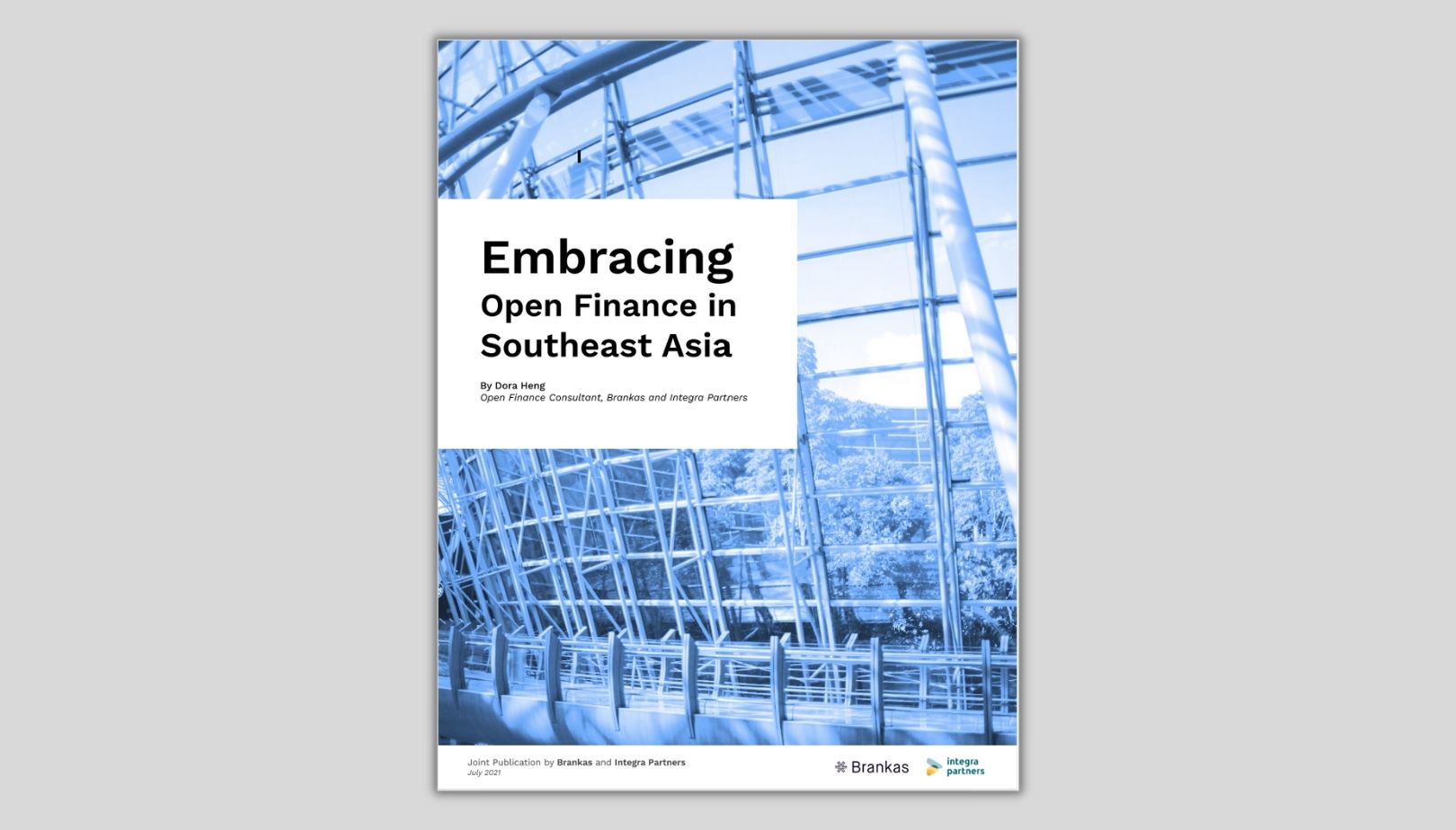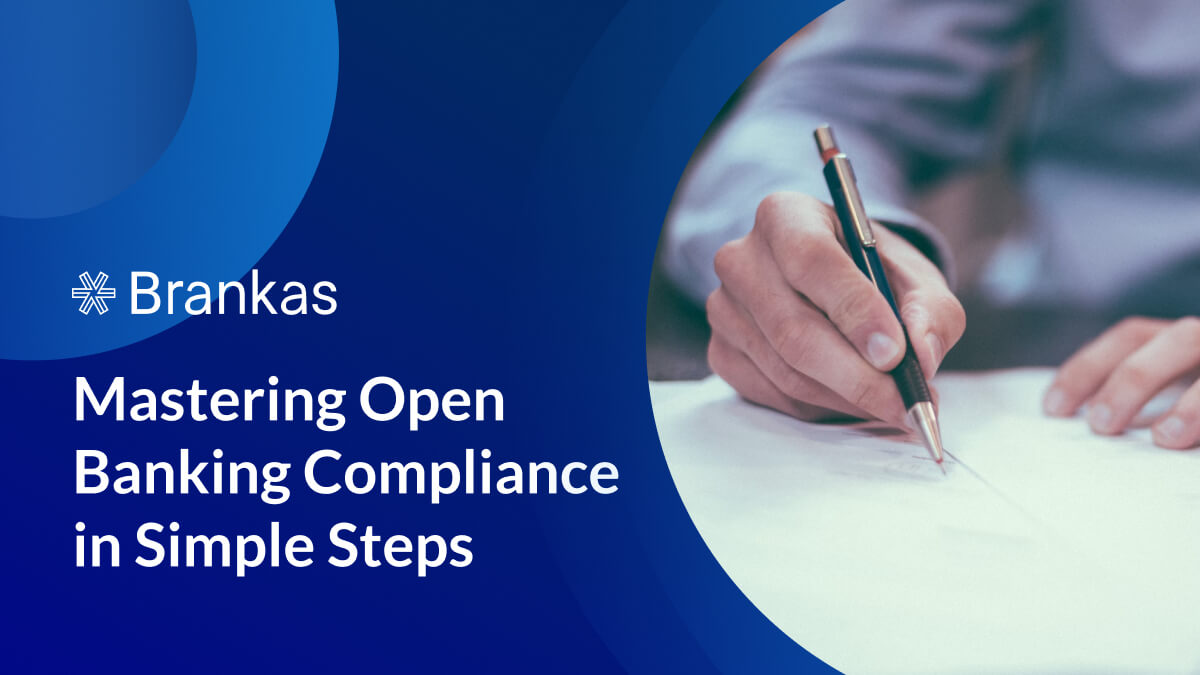
We recently published a whitepaper on embedded finance in Southeast Asia, Key concepts and definitions of open finance are discussed in this paper. Download it today.

Open banking is reshaping how institutions operate and deliver services. The innovation potential is immense as financial systems open up their data to third-party providers. However, this unparalleled opportunity comes with its challenges primarily centered around compliance with regulatory frameworks.
This article will provide a strategic roadmap that resonates with industry experts and is accessible to a broader audience. It is designed to equip you with the essential steps to ensure compliance and success in open banking compliance.
Open banking is a financial framework that advocates the secure sharing of financial data through APIs (Application Programming Interfaces). Financial institutions open up access to their customer data and infrastructure to external, authorized entities. The scope extends beyond traditional banking services to other financial products and services such as payments, investments, and more. This shift towards openness is rooted in the belief that increased data accessibility can drive competition, foster innovation, and ultimately benefit consumers.
Several key players play pivotal roles in open banking. Traditional banks are custodians of customer data and are central to the process. Third-party providers range from FinTech startups to established technology companies. Regulatory bodies also play a crucial role in shaping and overseeing the implementation of open banking frameworks to ensure security, privacy, and fair competition.
The adoption of open banking brings advantages for all stakeholders involved. For consumers, it translates to enhanced control over their financial data, enabling them to access a broader range of personalized and innovative financial services. Financial institutions benefit from increased efficiency, cost reduction, and the opportunity to tap into new revenue streams through collaborations with third-party providers. Open banking has the potential to drive economic growth by fostering a more competitive and dynamic financial services landscape.
A robust understanding of the regulatory landscape is vital to ensure compliance and foster a trustworthy financial ecosystem. Open banking operates within a framework governed by regulations and industry standards. Notable among these is the GDPR (General Data Protection Regulation), which safeguards the privacy and security of personal data. The PSD2 (Revised Payment Service Directive) plays a pivotal role, requiring financial institutions to open up access to their customer data through secure APIs.
GDPR and PSD2 are pivotal in Europe. Other regions, such as the United States, Australia, and Canada, are also witnessing the emergence of regulatory frameworks tailored to their unique landscapes. The global nature of financial transactions necessitates a nuanced approach to compliance, understanding, and adhering to the specific regulations relevant to each jurisdiction.
The regulatory framework provides a necessary structure, but compliance with these regulations poses challenges for financial institutions. The complexity of integrating secure APIs, ensuring data privacy, and aligning internal processes with regulatory requirements can be formidable. The rapid evolution of technology and the emergence of new financial services add a layer of complexity. Navigating these challenges demands a strategic and adaptable approach to compliance.
There is a notable absence of a comprehensive compliance framework in many countries beyond regions with established frameworks like GDPR and PSD2, leaving organizations to navigate uncharted territories. The absence of standardized regulations poses a dual challenge—organizations must grapple with the complexities of compliance and contribute to regulatory framework development in regions where they are lacking.
Non-compliance with open banking regulations transcends geographical boundaries and carries legal implications that resonate globally. Financial institutions operating in diverse regions must navigate a patchwork of laws, emphasizing the need for a meticulous understanding of each jurisdiction’s regulatory requirements. The legal consequences of non-compliance extend to fines, penalties, and potential restrictions on global operations.
Beyond legal considerations, adherence to regulations is instrumental in fostering trust globally. As open banking transcends borders, consumers and partners expect a uniform commitment to data security and ethical practices. Organizations that proactively align with regional regulations mitigate legal risks and position themselves as responsible global actors, contributing to establishing trust in the broader open banking ecosystem.
The regulatory environment surrounding open banking is multifaceted. Each region has its own set of rules and standards. Organizations must meticulously identify the regulations applicable to their operations, considering not only the local framework but also any global standards that may impact their business. This involves an examination of data protection laws, financial regulations, and industry-specific standards. The goal is to create a tailored roadmap that ensures adherence to all relevant regulations, fostering a proactive and preemptive approach to compliance.
The next critical aspect of the compliance assessment is evaluating the organization’s current state of compliance. This involves a comprehensive internal audit to gauge how well existing processes align with regulatory requirements. The assessment encompasses the functionality of data protection measures, the efficacy of current security protocols, and the integration of compliance into operational workflows. This analysis provides a baseline understanding of the organization’s strengths and weaknesses concerning open banking compliance, serving as a foundation for subsequent strategic decisions.
Assemble a dedicated compliance team. This team becomes the linchpin for ensuring that the organization understands regulatory nuances and can implement and sustain compliance measures effectively.
The cornerstone of a successful compliance initiative lies in defining clear roles and responsibilities within the compliance team. Each member must be equipped with the skills and knowledge necessary to navigate the intricacies of open banking regulations. Key roles may include a Compliance Officer overseeing the entire compliance program, Data Protection Officers to ensure adherence to data privacy regulations, and specialists focused on specific compliance domains. Defining these roles ensures there is a well-coordinated effort to address diverse compliance requirements. It’s not just about having a team; it’s about having the right people in the right roles, each contributing to the organization’s overall compliance strategy.
Open banking compliance is not confined to a single department; it requires collaboration across various functions within an organization. Building a compliance team that thrives on cross-functional collaboration is imperative. This involves breaking down silos and fostering communication between legal, IT, risk management, and other relevant departments. Collaboration ensures that compliance considerations are integrated into all facets of the business, from product development to customer service. The compliance team becomes a bridge, connecting disparate parts of the organization and ensuring a holistic approach to open banking compliance.
Implementing robust data protection measures involves encryption protocols to secure information during transmission and storage. Encryption ensures that even in the event of unauthorized access, the data remains secure. Organizations must adopt state-of-the-art encryption technologies and stay abreast of evolving security standards to fortify their defense against potential breaches.
Adopting best practices in cybersecurity involves regular vulnerability assessments, penetration testing, and the implementation of multi-factor authentication. A proactive cybersecurity strategy extends beyond mere compliance, focusing on the continuous identification and mitigation of potential threats. This approach safeguards against regulatory breaches and builds a resilient infrastructure capable of withstanding emerging cybersecurity challenges.
Identity verification begins with robust KYC (Know Your Customer) processes. Organizations must establish comprehensive procedures to verify the identity of individuals accessing their services. This involves collecting and validating personal information, conducting risk assessments, and implementing due diligence measures. Compliance with KYC regulations not only ensures regulatory adherence but also enhances the overall security of the open banking ecosystem by preventing unauthorized access and potentially fraudulent activities.
The implementation of secure authentication methods is central to open banking compliance. Multi-factor authentication, biometric verification, and dynamic authentication protocols fortify identity verification processes. These measures meet regulatory requirements and bolster the organization’s defense against identity theft and unauthorized access. Striking a balance between security and user convenience is key to ensuring seamless yet robust identity verification processes.
Adherence to its stringent data protection requirements is imperative for organizations operating in regions covered by the GDPR. This involves transparent data collection practices, obtaining explicit consent for data processing, and providing individuals control over their personal information. Ensuring GDPR compliance safeguards against legal repercussions and fosters a culture of respect for individual privacy.
Even in regions without specific regulations like GDPR, organizations must adopt best practices for data privacy. This includes implementing robust data access controls, encrypting sensitive information, and regularly auditing data handling processes. Organizations should go beyond meeting minimum compliance standards and aspire to establish a gold standard for data privacy, engendering trust among consumers and partners alike.
Open banking relies heavily on APIs for data sharing, and ensuring robust API security is non-negotiable. Organizations must implement encryption for data transmitted through APIs, employ secure coding practices, and conduct regular security audits. A proactive approach to API security safeguards against potential breaches and aligns with regulatory requirements for secure data transmission.
Compliance is not a static state but a dynamic, ongoing process. Real-time monitoring of transactions, access logs, and system activities is critical to identify and respond promptly to potential compliance breaches. Establishing a robust reporting mechanism ensures anomalies are detected and addressed swiftly, minimizing the impact on regulatory standing and customer trust.
Regular compliance audits are essential to evaluate the effectiveness of existing compliance measures. These audits involve a comprehensive review of policies, procedures, and systems to identify any gaps or areas for improvement. By conducting periodic audits, organizations can proactively address issues before they escalate, ensuring continuous alignment with regulatory standards.
Organizations should employ continuous improvement strategies based on audit findings. This involves a dynamic approach to adapting and enhancing compliance measures in response to changing regulatory landscapes and emerging threats. Regular assessments provide valuable insights into the efficacy of existing processes, allowing organizations to refine their strategies for sustained compliance excellence.
Comprehensive training programs should be implemented to educate employees on open banking compliance requirements. This involves disseminating information on relevant regulations, data protection practices, and the organization’s specific compliance policies. A well-informed workforce is better equipped to identify and address potential compliance issues, contributing to a culture of vigilance and responsibility.
Organizations should actively foster a culture of compliance among their staff. This involves instilling a sense of responsibility and ownership regarding compliance obligations. Employees should be encouraged to report any potential compliance issues promptly, creating a collaborative environment where compliance is seen as a shared goal rather than a burdensome task.
Regular and proactive communication with regulatory authorities is crucial for organizations in the open banking space. This involves reporting compliance activities and seeking guidance and clarification on ambiguous or evolving regulatory requirements. Establishing an open line of communication fosters transparency and demonstrates a commitment to collaboration in upholding regulatory standards.
The regulatory landscape is dynamic, with rules and standards evolving constantly. Organizations must actively stay informed about regulatory updates that may impact their operations. This involves monitoring official communications from regulatory authorities, participating in industry forums, and leveraging external resources to stay ahead of changes. A proactive approach to regulatory awareness positions organizations to adapt swiftly to new requirements and maintain compliance excellence.
Regulatory frameworks are dynamic and subject to changes and updates. Organizations must stay ahead of these changes by continually monitoring regulatory developments. This involves participating actively in industry discussions, attending relevant conferences, and maintaining a network of contacts within regulatory bodies. By anticipating and adapting to evolving regulations, organizations position themselves to implement necessary changes proactively, ensuring ongoing compliance.
The financial services industry is dynamic, with emerging technologies, market trends, and consumer behaviors shaping the landscape. Organizations must adapt to these changes to remain competitive and compliant. This includes embracing new technologies, refining business strategies, and ensuring compliance measures evolve in tandem with broader industry shifts.
A key aspect of sustainable open banking success lies in strategic partnerships with FinTech companies like Brankas. Brankas, through its Open Finance Suite, offers a comprehensive solution that facilitates seamless data sharing and aligns with stringent compliance standards. Banks can enhance their compliance measures, ensuring secure API integration, robust data protection, and adherence to regulatory requirements by leveraging Brankas' expertise. Brankas provides a holistic solution that aligns with the dynamic landscape of open banking compliance, from API security to real-time monitoring and reporting.
The significance of compliance cannot be overstated as financial institutions navigate the complex landscape of regulatory frameworks, data privacy, and evolving industry standards. Mastering open banking compliance is not merely a checklist of steps; it is a strategic imperative that demands continuous commitment and adaptability. As financial institutions embrace this commitment and forge strategic alliances with innovative FinTechs, they can effectively navigate the complexities of open banking compliance.

We recently published a whitepaper on embedded finance in Southeast Asia, Key concepts and definitions of open finance are discussed in this paper. Download it today.

The process of customer onboarding in the banking sector is pivotal. Traditional customer onboarding involved a labyrinth of paperwork, in-person meetings, and extensive documentation. However, banks have been moving toward the digital frontier in recent years. The transformation enabled banks to offer a streamlined and efficient approach that simplifies onboarding and enhances the banking experience.